Rank Species | Genus Couroupita Higher classification Couroupita | |
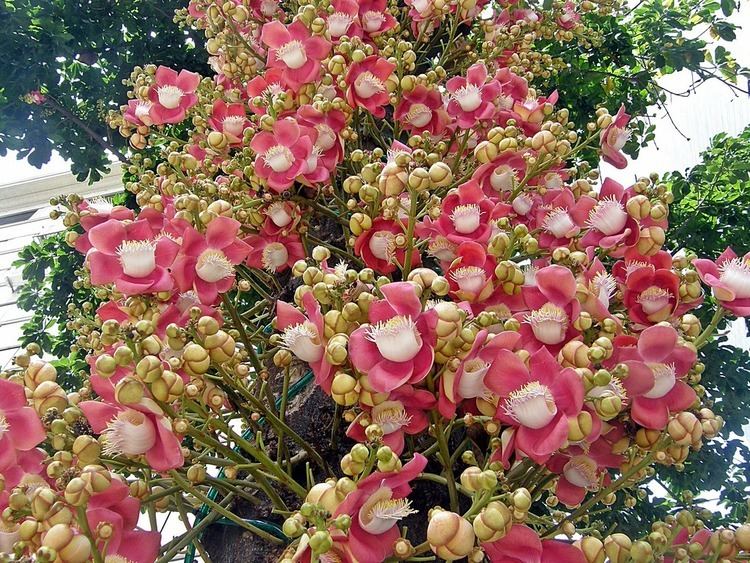 | ||
Similar Couroupita, Lecythidaceae, Sal tree, Millingtonia hortensis, Phanera purpurea | ||
Cannonball tree nagalinga pushpa couroupita guianensis
Couroupita guianensis, known by several common names, including cannonball tree, is a deciduous tree in the family Lecythidaceae, which also contains the Brazil nut (Bertholletia excelsa) and Paradise nut Lecythis zabucajo. It is native to the rainforests of Central and South America. It is cultivated in many other places.
Contents
- Cannonball tree nagalinga pushpa couroupita guianensis
- Cannonball tree couroupita guianensis
- Description
- Scientific and common names
- Pollination
- Dispersal
- Human uses
- Cultural recognition in Sri Lanka
- References

Cannonball tree couroupita guianensis
Description
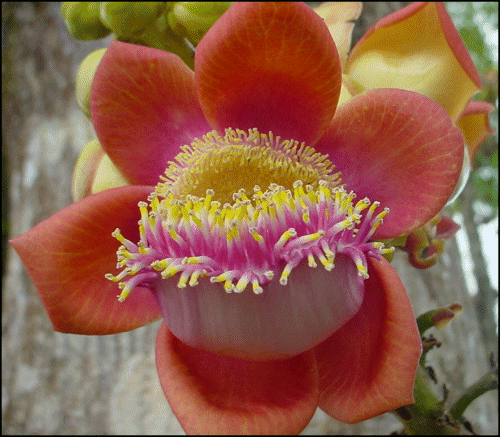
Couroupita guianensis grows up to 35 m (meters) in height. The clustered leaves vary in length, generally from 8 to 31 centimeters, but reaching up to 57. The flowers are born in large bunches up to 80 m(meters) long. Some trees flower profusely, until the entire trunk is buried in flowers. One tree can bear 1000 flowers per day. They are strongly scented, especially at night, and in the early morning. They are large, up to 6 centimeters wide, and often brightly colored, the six petals in shades of pink and red near the bases and yellowish toward the tips. There is a ring of stamens at the center, and an arrangement to stamens that have been modified into a hood. The large fruit, which is woody and very spherical, measuring up to 25 centimeters wide, gives the species the common name "cannonball tree". A smaller fruit contains perhaps 65 seeds, while a large one can have 550. One tree can bear 150 fruits. The fruit takes up to a year to mature in most areas, sometimes as long as 18 months.
Scientific and common names
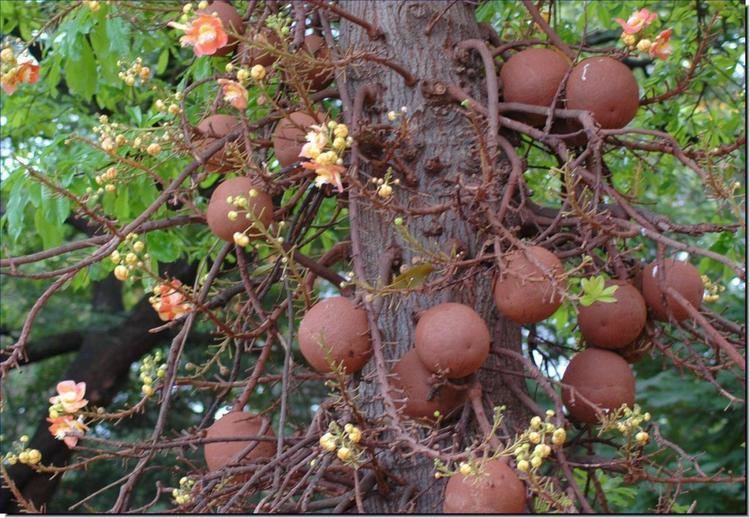
The tree was named Couroupita guianensis by the French botanist Jean Baptiste Christophore Fusée Aublet in 1755. Common names in other languages include many translations of the English cannonball tree. Common names include macacarecuia (Portuguese), coco sachapura (Colombia, Panama), bala de cañón (Costa Rica, Panama), kanonskogelboom (Dutch), arbre à boulet de canon (French), kouroupitoumou (French Guiana), nagkeshar (Bengali), Nagalinga Pushpa (Kannada), Nagalingam or Lingam (Tamil), నాగమల్లిNagamalli (Telugu), sala (Indonesia), granadillo de las huacas (Panama), ayahuma (Peru), and boskalebas (Suriname). called also Naaga danthee in Malayalam and Nagakeshara ନାଗକେଶର (Odia).
Pollination
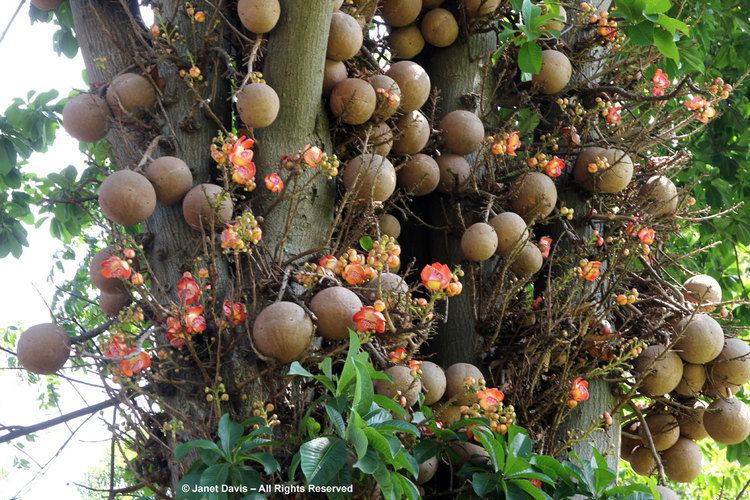
The flowers lack nectar, but are very attractive to bees coming for the pollen. The carpenter bee Xylocopa brasilianorum is a common pollinator of cultivated trees in Rio de Janeiro, just outside the tree's native range. Other carpenter bees such as Xylocopa frontalis, as well as wasps, flower flies, and bumblebees visit the flowers. The flowers produce two types of pollen, fertile pollen from the ring stamens and sterile pollen from the hood structure.
Dispersal
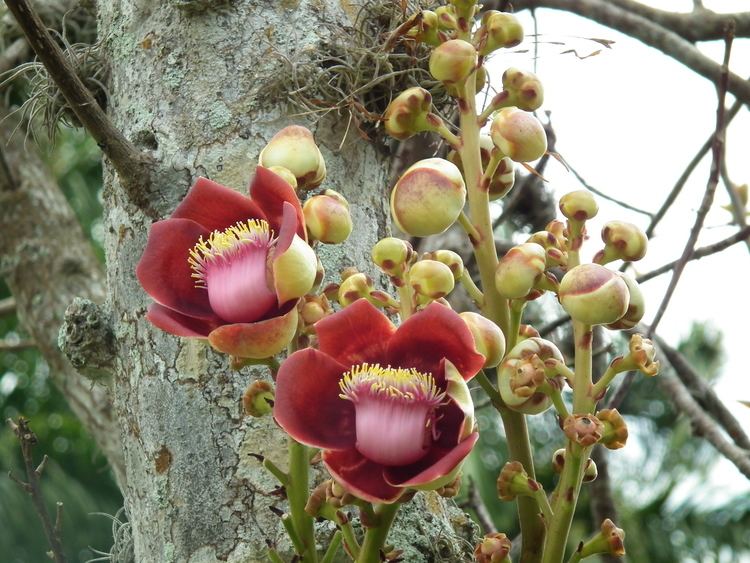
The fruit falls from the tree and often cracks open when it hits the ground. Sometimes they remain whole until an animal such as a peccary breaks it open. Many animals feed on the fruit pulp and the seeds, such as the paca and domestic chickens and pigs. The seeds are coated with trichomes which may help them pass through animal intestines.
Human uses
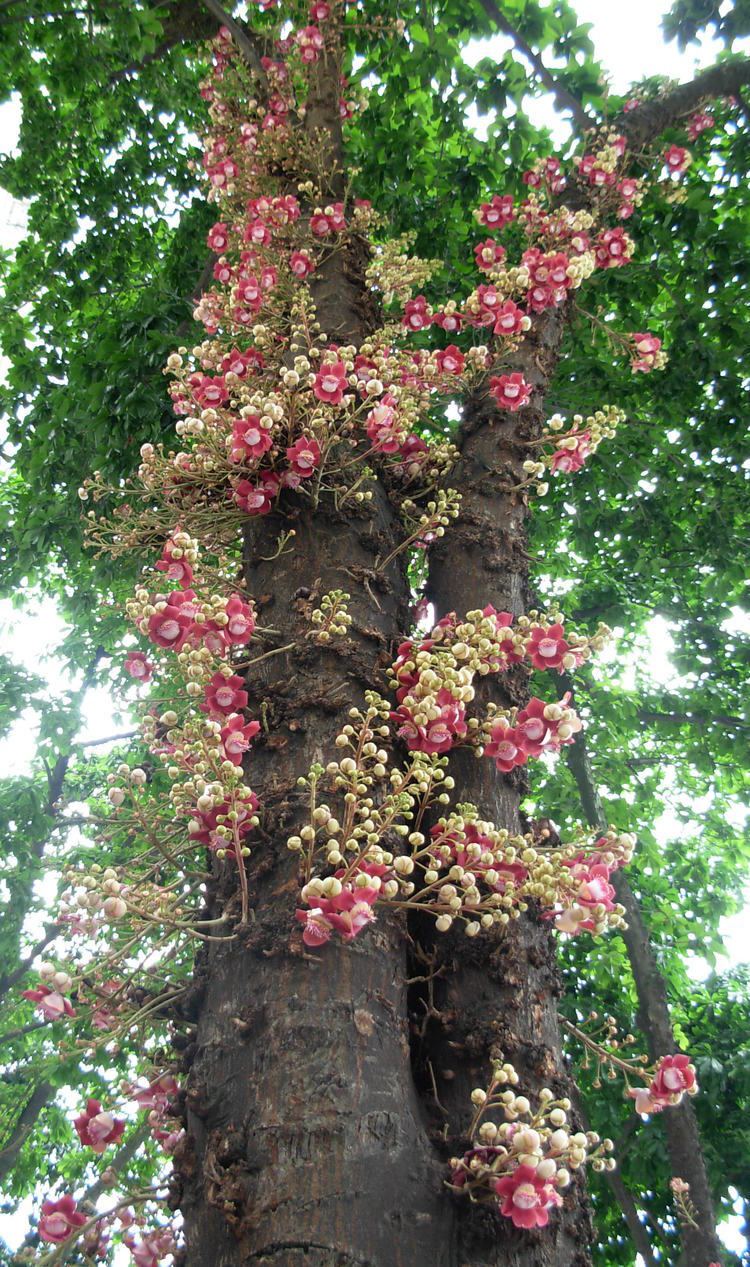
This tree is planted as an ornamental for its showy, scented flowers, and as a botanical specimen for its interesting fruit.
The fruit is fed to livestock such as pigs and domestic fowl.
The fruit is edible, but not usually eaten by people because it can have an unpleasant smell.
In India the tree is sacred to Hindus, who believe its hooded flowers look like the nāga, and it is grown at Shiva temples.
There are many medicinal uses for the plant. Native Amazonians use extracts of several parts of the tree to treat hypertension, tumors, pain, and inflammation. It has been used to treat the common cold, stomachache, skin conditions and wounds, malaria, and toothache. Laboratory tests show that extracts of the plant have some antimicrobial activity and inhibit the formation of biofilms.
The fruit pulp is rubbed on sick dogs to cure them of mange.
Cultural recognition in Sri Lanka
According to Buddhist tradition, Maya held onto the branch of a blossoming sal tree while she was giving birth to the Lord Buddha. Because of this, the sal tree is revered by many Buddhist people around the world.
C. guianensis was introduced from Guyana to a botanical garden in Sri Lanka in 1881. For reasons which remain unclear, the tree was mistakenly believed to be Shorea robusta, and was planted around many Buddhist temples in Sri Lanka and Southeast Asia.
